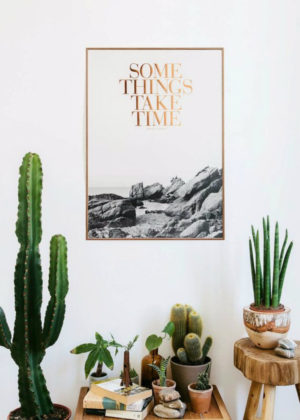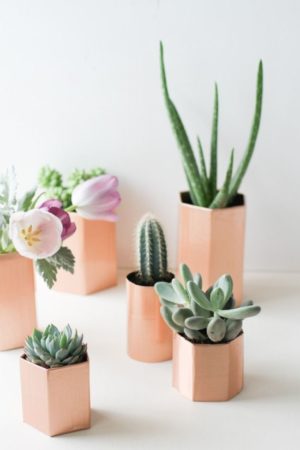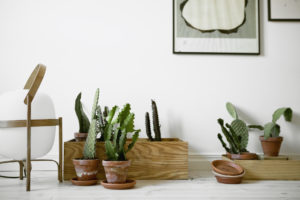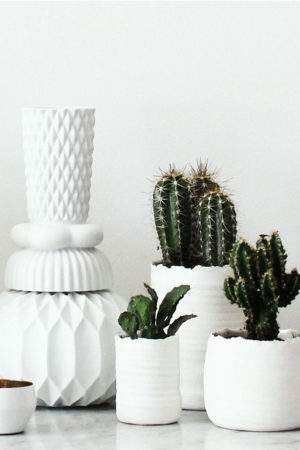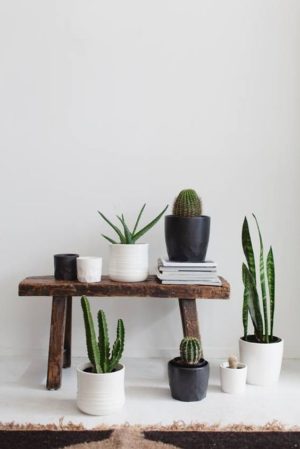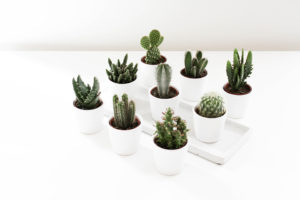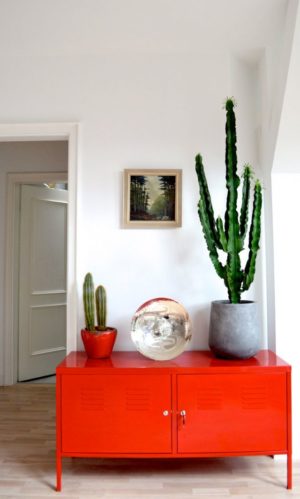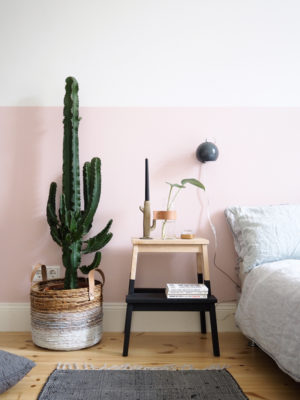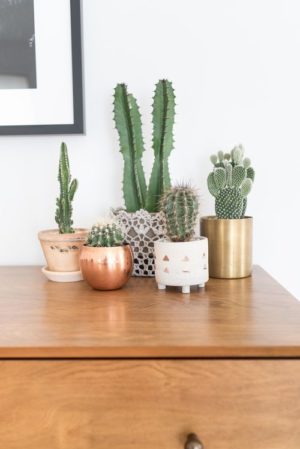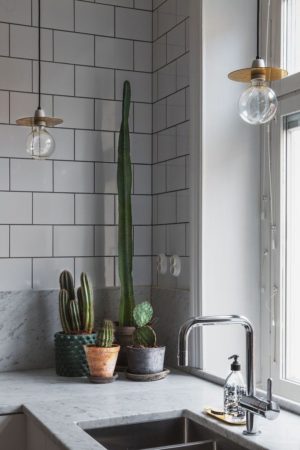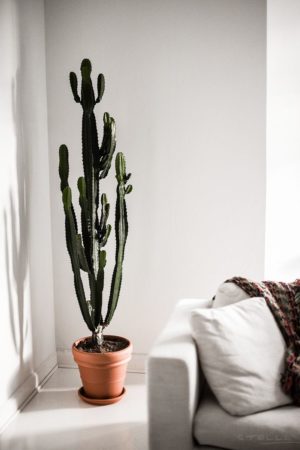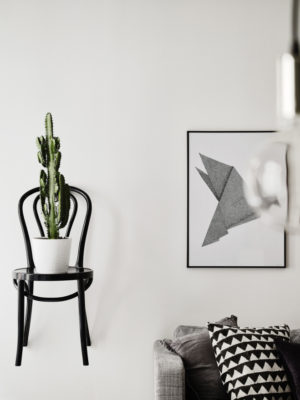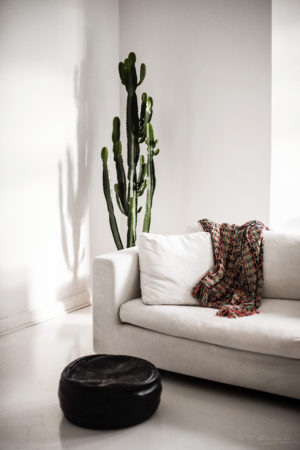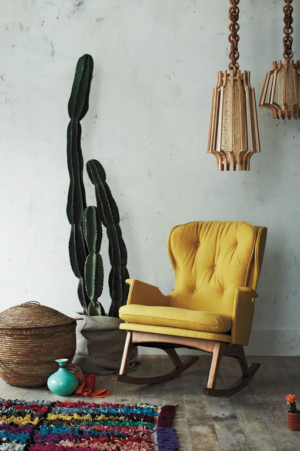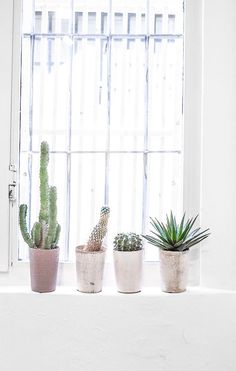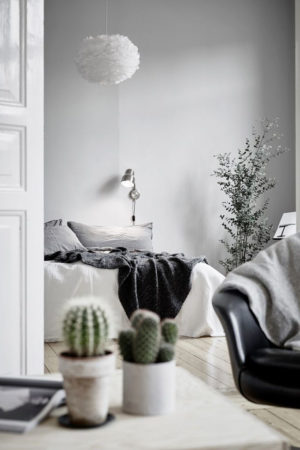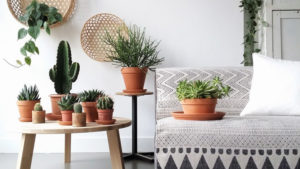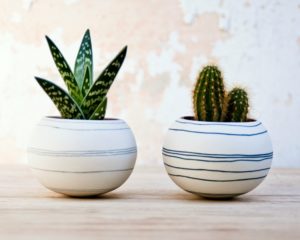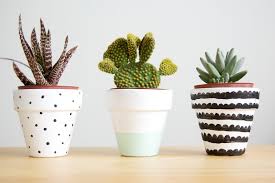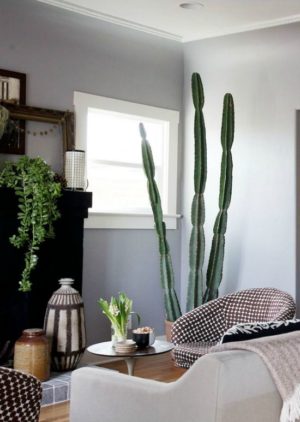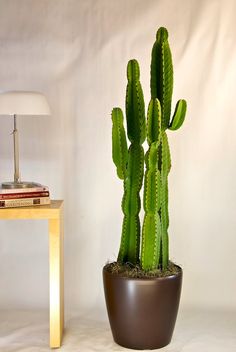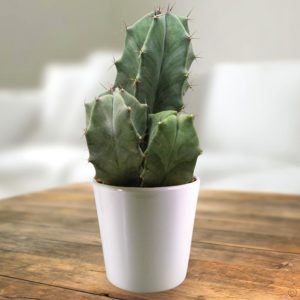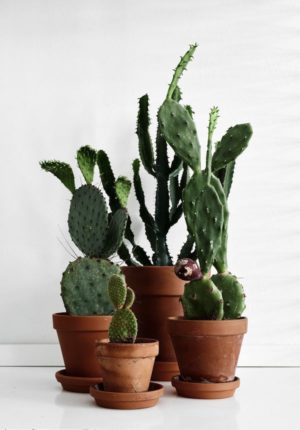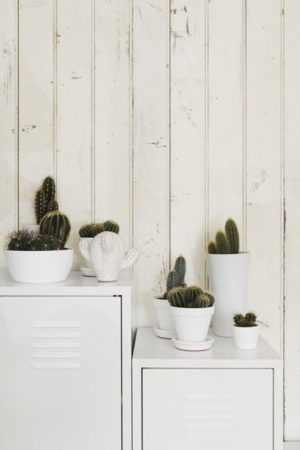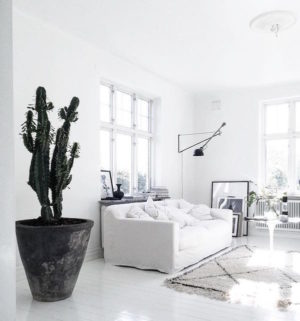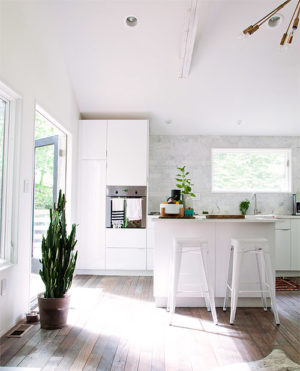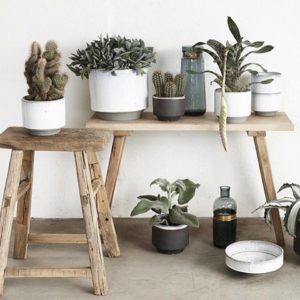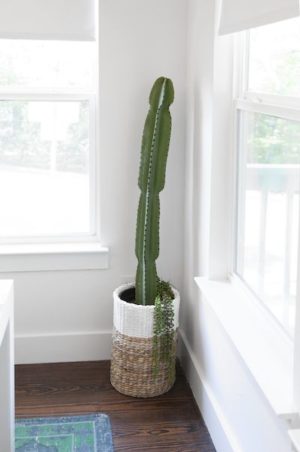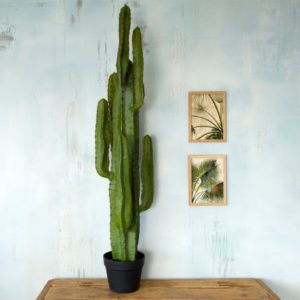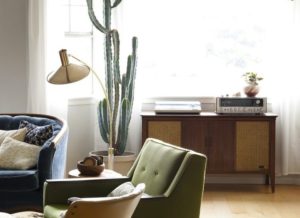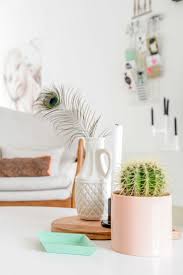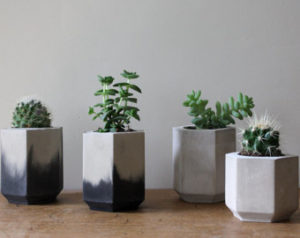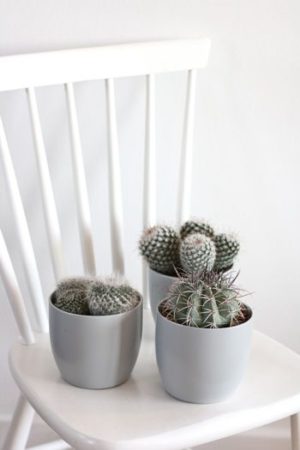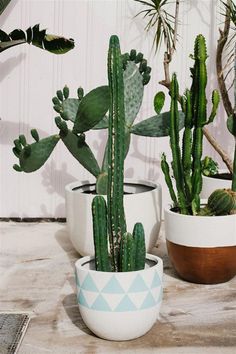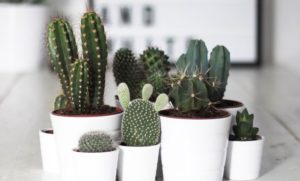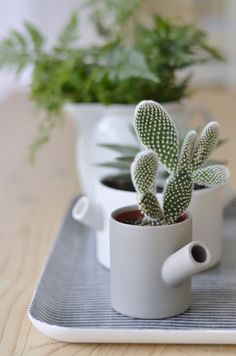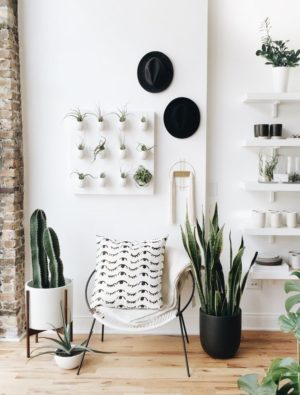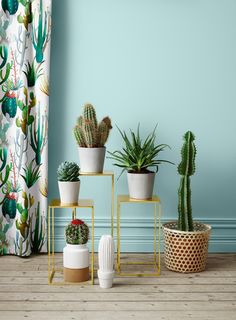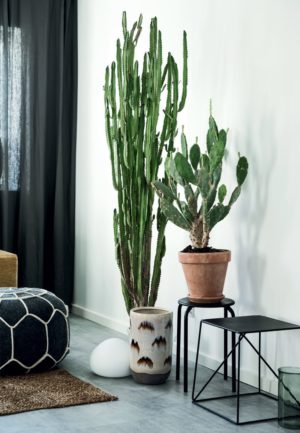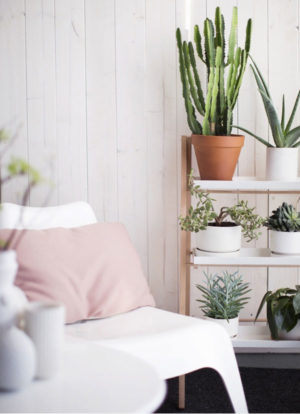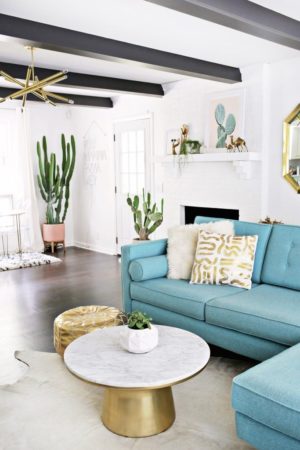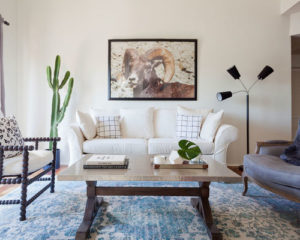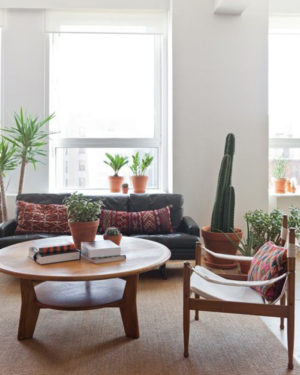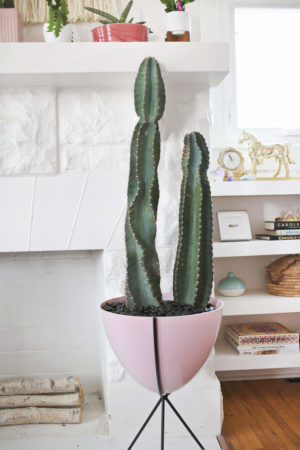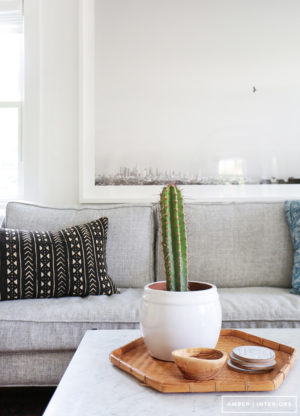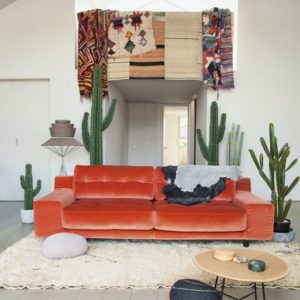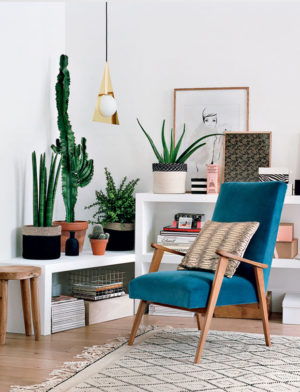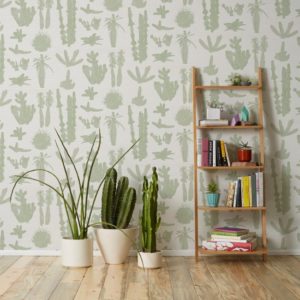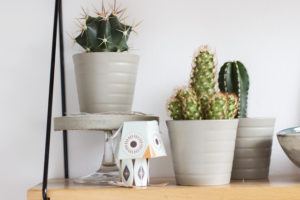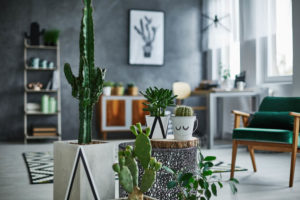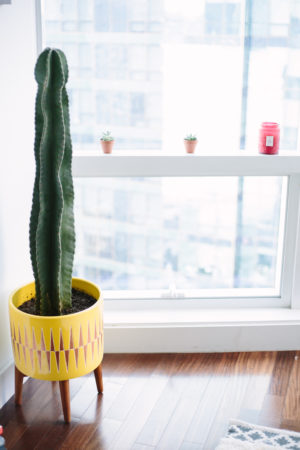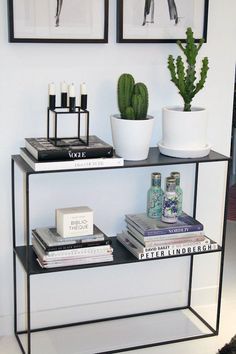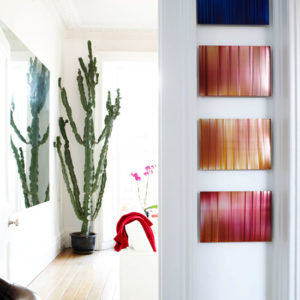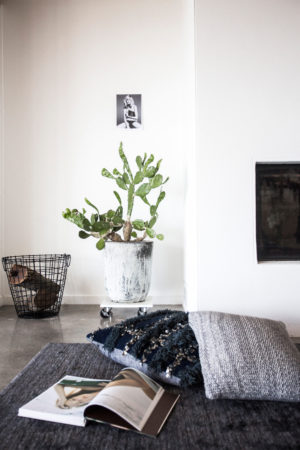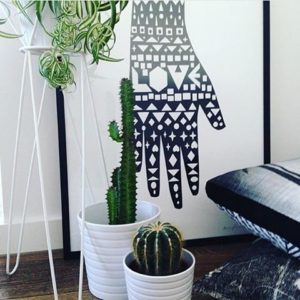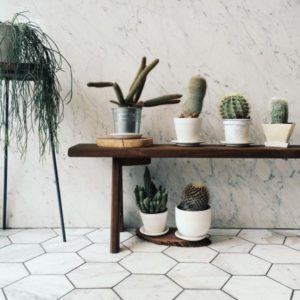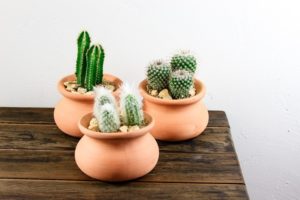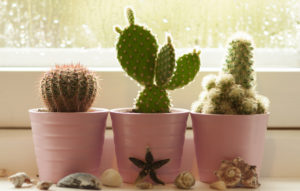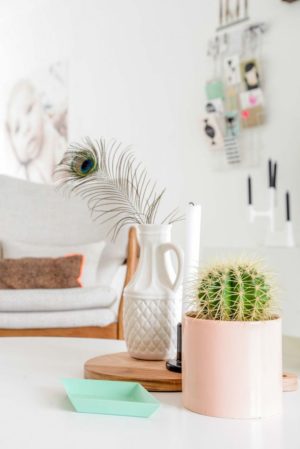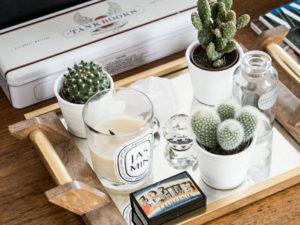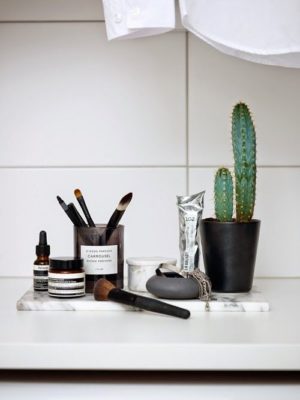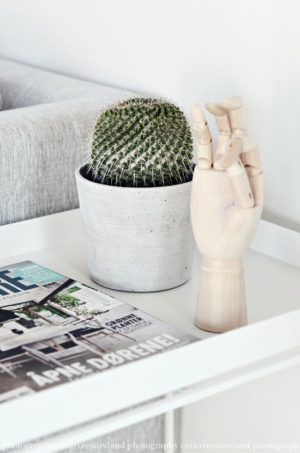Keeping plants in the house is not against many housewives. Why? They fill the premises with pure oxygen, remove carbon dioxide from the room air, which ensures a healthy microclimate in the apartments. In addition, flowering cacti, orchids, hibiscus are simply beautiful.
Have you ever thought that green friends can become a full-fledged decorative element? They are able to play the role of an aesthetic interior component, designed to emphasize or shade the general stylistic solution of the surrounding space.

Home cactus will emphasize the style of the interior
Oddly enough, it was the home cactus that managed to succeed in the field of interior design. The love of designers for cute thorns is quite understandable, because this type of plant is the least whimsical in content, so even those who travel often can afford it. In addition, they say that the cactus is a difficult flower. He is credited with the ability to protect housing from the influx of negative energy. In general, it is good for keeping in the house from all sides. So what kind and how to use cacti in the interior of the room?
back to index ↑Types of home cacti
Which of the prickly pets are more suitable for decorating the interior?
1. Whip aporocactus. Easy to grow: centimeter thick stems give several centimeters of annual growth. In spring it is covered with large flowers. Great hanging basket filler.

Whip aporocactus is ideal for hanging baskets
2. Cereus Peruvian. The most sought after of cacti in interior design, which is suitable for creating solo compositions. Grows up to a meter high. It blooms in the summer, throwing out luxurious long flowers. There is another representative of this species - a domestic cactus, called Cereus Peruvian monstrous. He makes a lasting impression with his ugly mutation. It grows slowly, so it may well serve as the center of a flower arrangement.

Cereus Peruvian is suitable for creating solo compositions.
3. Capricorn Astrophytum. Another type of beautifully flowering cacti. At a young age, it has a luxurious spherical shape, but with age, the plant stretches into a cylinder. Daisy-like yellow flowers appear in summer. There are several subspecies of plants that differ in the size and shape of the spines.
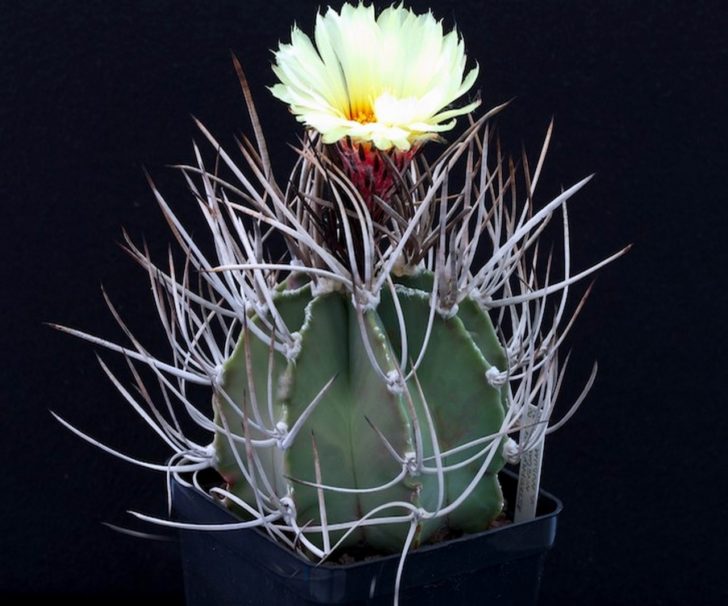
Astrophytum capricornus
4. Cleistocactus Strauss. The cactus claims to be cared for, so it is rarely used in design, but if it appears in a solution, it makes a splash with its chic silver look.

Cleistocactus Strauss will make a splash with its silver color
5. Echinocereus comb. Spiked 25 cm column. Of these cacti, the Salm-Dick echinocereus, which has a wonderful aroma of bright flowers, is used in the interior of the premises.
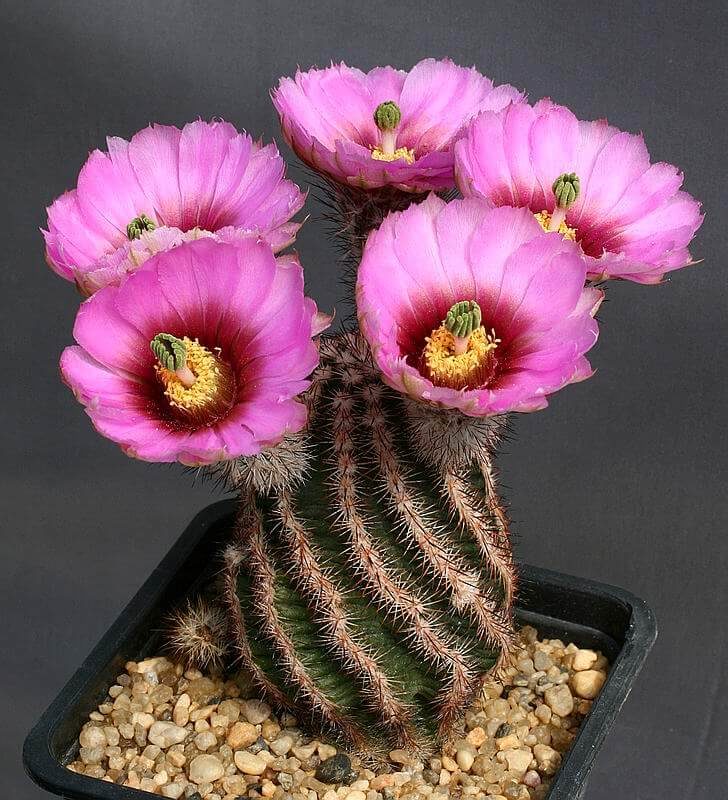
Echinocereus comb with fragrant bright flowers
6. Mammillaria Bokasanskaya. Represented by silvery flowering cacti.In spring, the plants are covered with white, wreathed flowers around the stem. How gorgeously such a home cactus blooms can be seen in the photo. The representative of Mammillaria Vilda is very similar to this species, only its shape is more elongated, closer to oval.
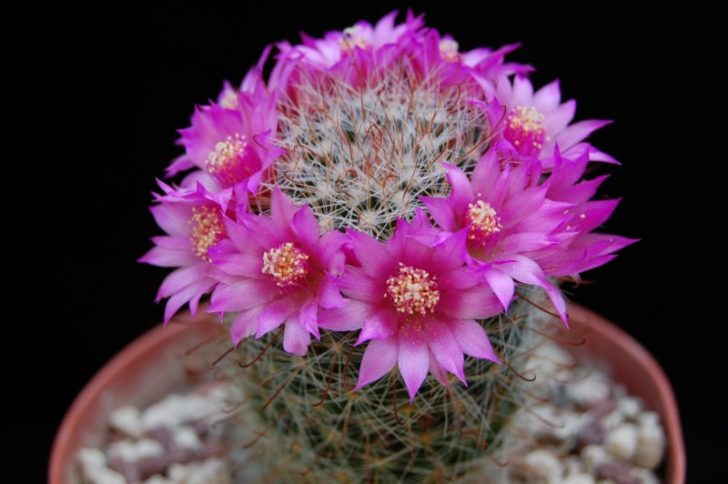
Flowering mammillaria bokasanskaya
7. Gymnocalycium Mikhanovich. An ornamental variety of Friedrich's cactus, popularly known as Little Red Riding Hood. An artificially obtained species: its colored stems are grafted onto standard green plant species and get the original shape and appearance of flowering cacti.
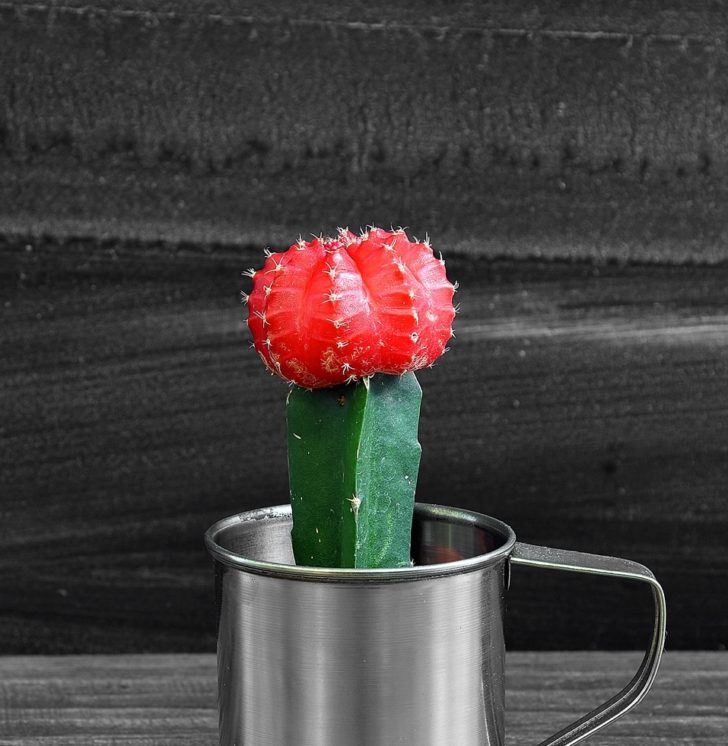
Original home cactus Gymnocalycium Mikhanovich
8. Notocactus Otto. A spherical, hard-thorned species that begins to bloom after a few years of good maintenance. In gratitude for the care, the owners are pleased with large eight-centimeter diameter flowers. If you need something more unusual for interior decor, then it is better to look at the Notocactus Leninghaus subspecies: its cylindrical stem can decorate any stylistic composition.
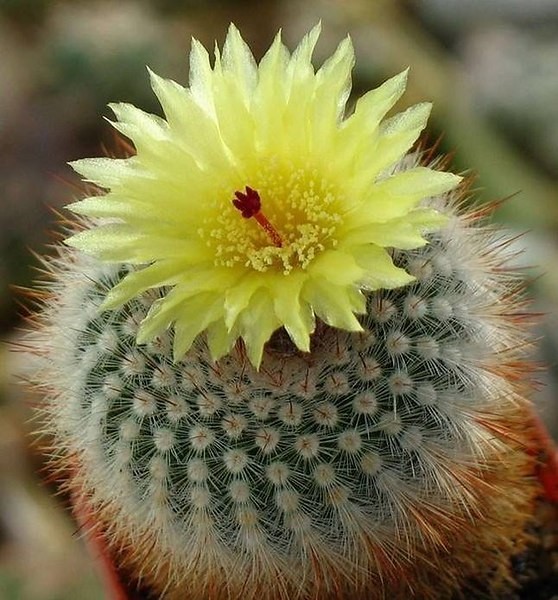
Notocactus Otto blooms with large flowers
9. Prickly pear. It grows no more than 30 cm and is covered with small hook-shaped spines of a white or reddish hue. A wide variety of subspecies in this class makes cacti in demand in interior design.
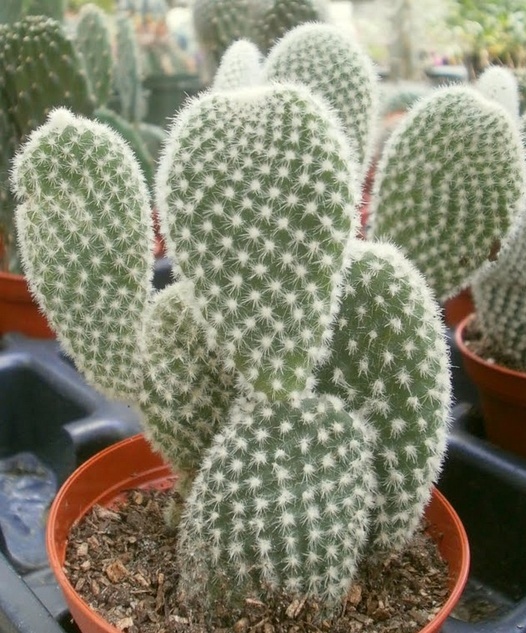
Prickly pear
10. Rebutia is tiny. Its thick spherical stems are covered with rich orange-hued flowers all summer. Together with the spherical Rebutia senile, it can become an element of a mini-garden or settle in a greenhouse. How original the home cacti collected in plantings and mini-gardens look, see the photo.

Rebutia tiny in summer is covered with a rich orange hue with flowers.
11. Trichocereus whitening. Majestic cactus: a meter-high column, relentlessly expanding in diameter over the years, is able to impress anyone. If something more monumental is provided for in the designer’s idea, then perhaps the home cactus Trichocereus Shpacha will suit this role. It will stretch at least one and a half meters, and even under the ceiling.

Trichocereus whitening
How to use cacti in the interior of the room
“In principle, a home cactus does not require large volumes of soil for a comfortable existence, so you can generally abandon flower pots in the usual sense”
Look for plants that will add a breath of nature to your life and require little attention in return - look at the house cactus! Desert dwellers are simply unsurpassed in this role. It is distinguished by the expressiveness of the silhouette, which makes its presence appropriate in the premises of any functionality. In the living room, for example, you can put large flowering cacti or grown like a tree. Under such a masterpiece in a high clay pot, it is not a sin to highlight a whole corner of the room. Thus, exotic notes are easily added to the interior. The cactus can also play the role of a space separator.
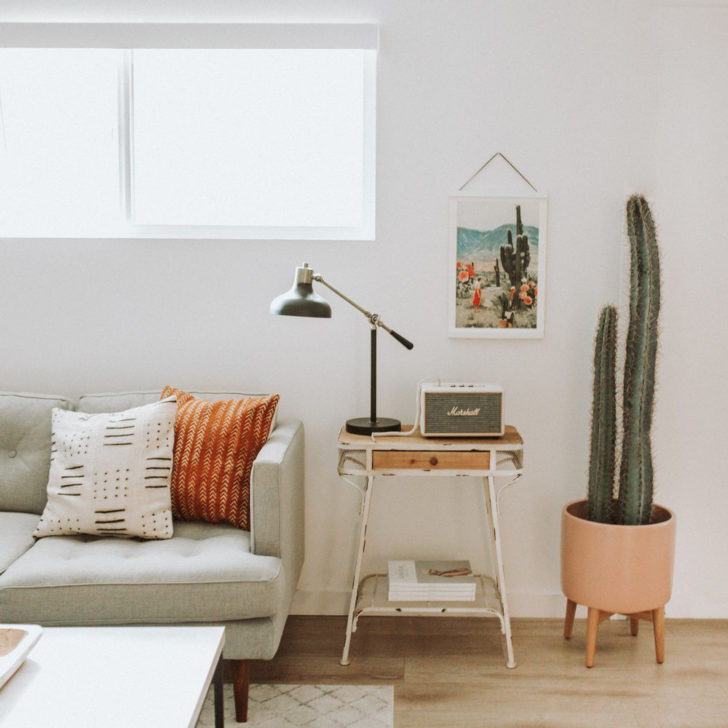
Cactus in the interior of the living room
In cramped rooms, it is more rational to use dwarf types of domestic cacti in interior design. Their small size will not reduce the decorative effectiveness of plants. They will also bring with them a special mood and will make it possible to hide minor imperfections in the finish.
A wonderful step would be to combine small flowering cacti in the composition. They are put on public display, posting:
1. on coffee tables,
2. arcade bookshelves,
3. stairs.

small cacti on the shelves
Although even a cardboard box can serve as a pot for such plants, it is better to use glass containers to make the green decor even more attractive. They are not filled with pure earth mixture, but light pebbles or colored glass are poured there.
In principle, a home cactus does not require large volumes of soil for a comfortable existence, so you can generally abandon flower pots in the usual sense, and plant them in seemingly completely unsuitable things for these purposes: for example, in a women's boat shoe. This, of course, will somewhat complicate the care of the cactus (in particular, watering), but the still life will look non-trivial. The use of bright, unusual design of pots and flowerpots will make even the most inconspicuous home cactus the focal point of the interior and make the latter sparkle with new colors.
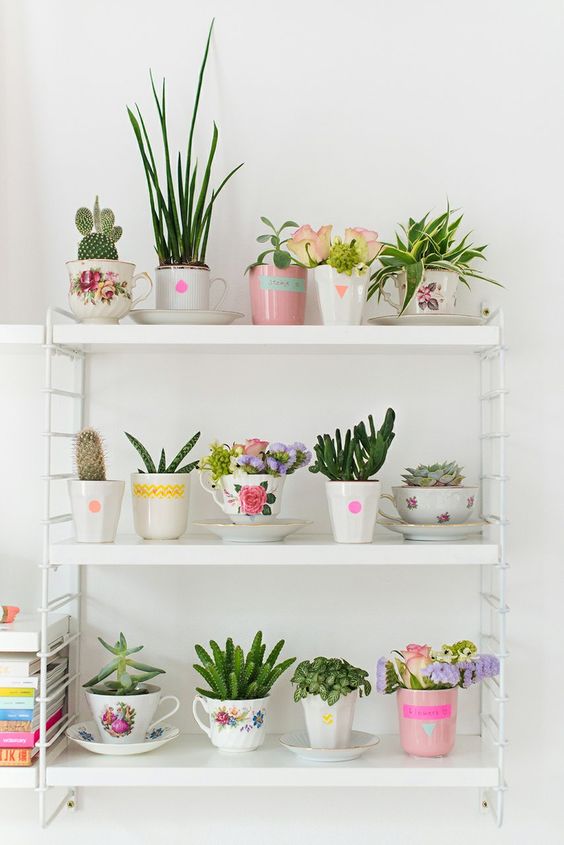
Cacti in original pots will decorate the interior
Interesting compositional solutions of several plants with similarities in the forms of color shades. You can supplement such groups with larger specimens of cacti with shading dark silhouettes. They are put up behind the main compositional group.
A collection of dwarf flowering cacti can be grown not in freestanding, but in one large flower pot. In this way, it is easier to demonstrate the beauty and individuality of each individual. The thorny representatives of the deserts are perfectly combined with houseplants of a different origin.
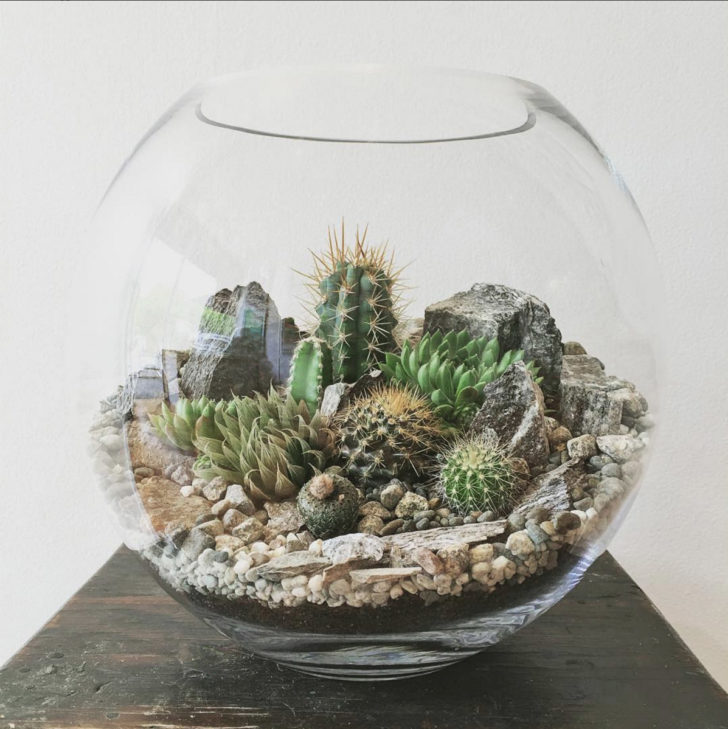
Composition of cacti of different types
Cacti feel great in the interior of the room in improvised glass greenhouses, where it is possible to support a specific microclimate. Such greenhouses themselves and the plantings in them have a very original look. If you want to make them a round-the-clock center of attention, LED lighting is organized under the glass. How in this case the home cactus will look like, see the photo.
If flowering cacti are bright in themselves, then non-flowering ones can be lost in a large room space. Decor with the following attributes will help to give them attractiveness:
- bows;
- flowers on sticks;
- butterflies;
- rhinestones;
- beads;
- ladybugs.
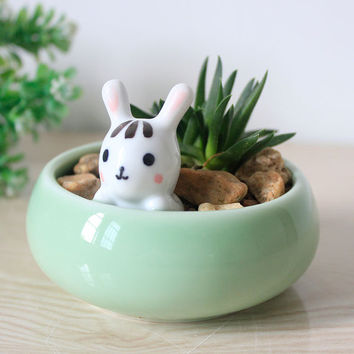
Cactus pot decor
With these gizmos, you can dress up both the plant itself, fixing them, as if on holders, on thorns, and the earth around it.
Homemade cacti can be the basis of a colorful mini zen garden. Creating a composition is easy. A clearing with planted succulents is covered with a layer of sand, on which geometrically clear patterns are drawn with a stick. This miracle will help in the fight against stress, will distract from pressing problems. A master class on organizing a mini-garden with a homemade cactus is in the photo version.
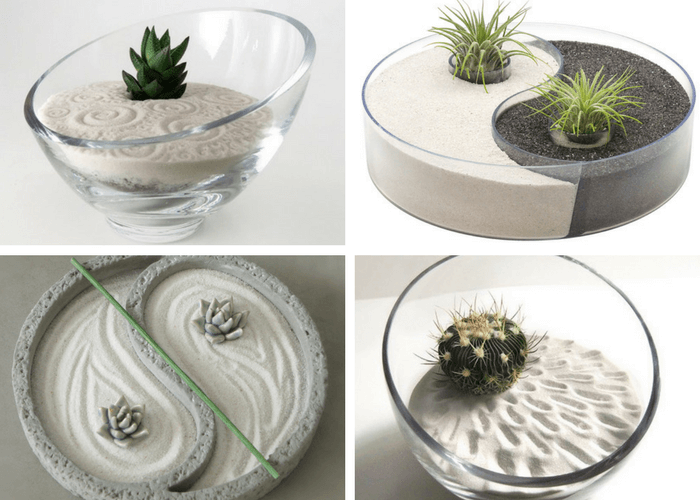
An example of a mini zen garden with cacti
Cacti collected in desert compositions will look good in the interior of the premises. They can be placed in a variety of containers. A floor designer box and a small dish placed on the windowsill can also simulate the expanses of the desert. Between the cacti, planted in the sand, bizarrely shaped stones and pebbles of various sizes are laid out. A variety of types of domestic cacti are taken for landing.
Thorny plants will be an excellent addition to interiors of various stylistic orientations. They will fit into the classics, and in the empire, and in the antique setting, and even in high-tech. For the latter, by the way, flowering cacti planted in clear glass pots or flowerpots with metal decor are best suited. This type of vegetation will greatly help in playing up African settings and decorating rooms under the desert.
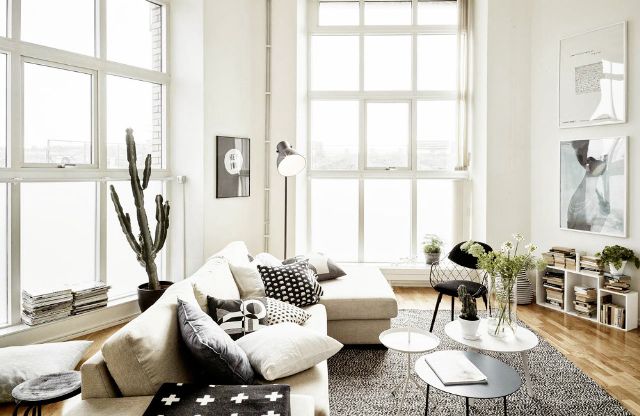
Home cactus will fit into any interior
Selection Tips
What kind of home cacti will appear in your interior, you need to think about it. When choosing plants, you need to be guided by some recommendations. The priority of choice should be large and strong species, firmly seated in pots. If there are children in the house, even very beautifully flowering cacti should not be taken if they are dotted with large thorns.
If you plan to create a green composition, then in order for it to please the eye longer, you need to make it from slowly growing types of domestic cacti.
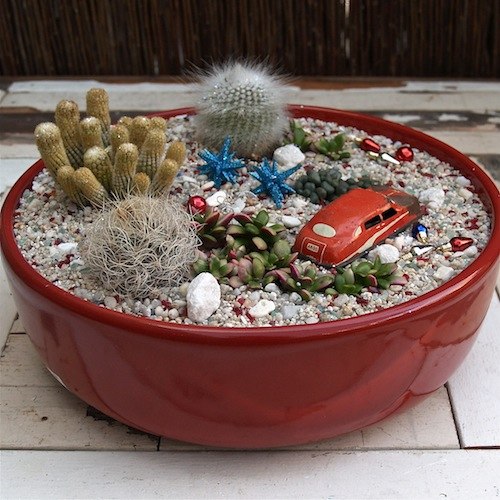
Make arrangements with slowly growing cacti
And the last. Keep in mind that members of the family, with white hairs instead of thorns, adapt very poorly to the home microclimate and often die, so if no one is particularly going to take care of the plantation, it is better to refuse such plant options.
back to index ↑Home cactus and care
Keeping this unpretentious plant in the house is a pleasure. There are no special difficulties in leaving, but like any living creature, it requires at least a modicum of attention. Blooming cacti will appear only in caring and attentive owners.
Where to plant
The question is not fundamental. It can be everything from pots with a retractable bottom, to shoes and baking sheets. Home cactus does not like tall and narrow pots. In them, its root system is at risk of decay.
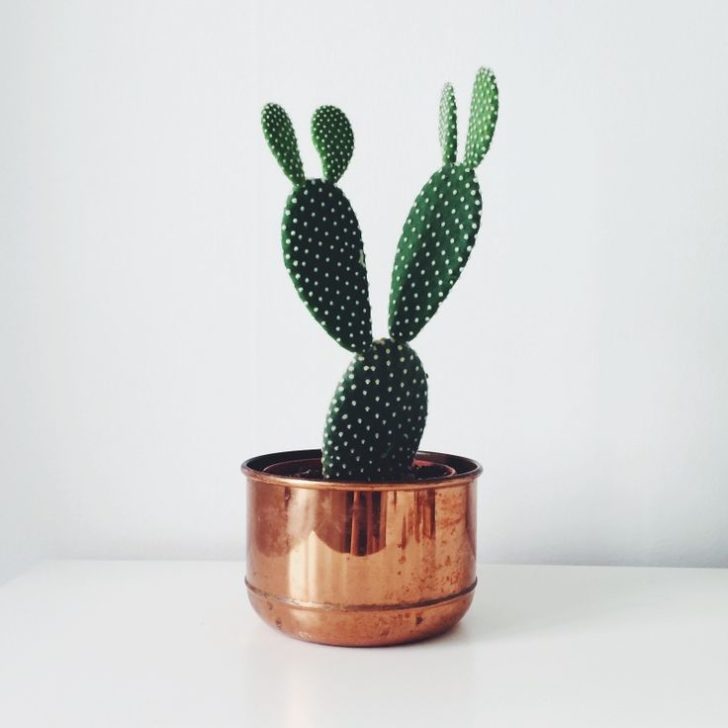
Cacti do not like tall and narrow pots.
What to plant
To facilitate home care for a cactus, it is better to take a slightly acidic, loose, light consistency soil. It will absorb moisture well and be ventilated. You can prepare your own soil for planting according to the following recipe:
1. Part of the river sand.
2. Part of leaf humus.
3. Part of the sod land.
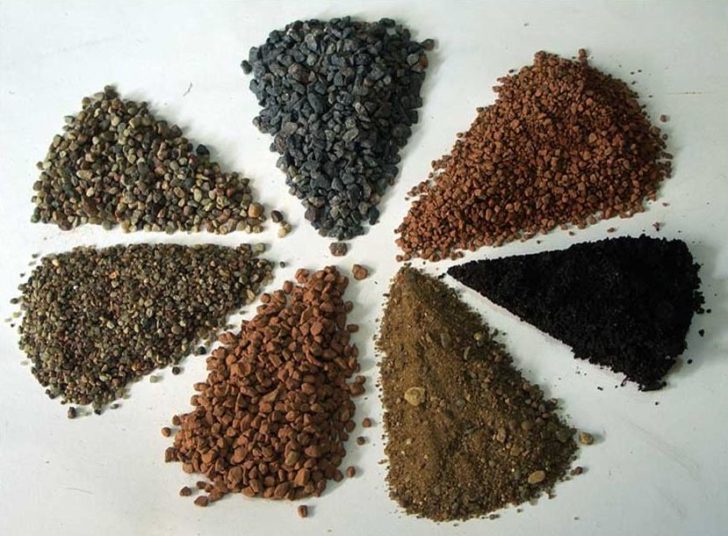
The composition of the soil for cacti
Absolutely all types of domestic cacti do not tolerate waterlogging of the soil, so a drainage layer must be made at the bottom of the planting tank. You can fall asleep in its quality gravel, expanded clay or brick chips.
How to plant
On the eve of the transplant, watering is stopped. From the dried earth, the roots will be extracted more easily. In the new "house" drainage is laid and a third of the volume of prepared land is filled up. The cactus is lowered into the pot, and the roots are sprinkled with the remaining soil. The root neck is hidden under a layer of river sand.
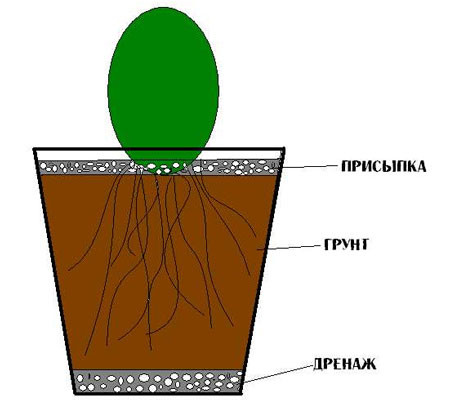
Catus landing pattern
After transplantation, watering is also not provided. It will be possible to give the plant moisture for 4-5 days, when it copes with stress. Slow-growing types of domestic cacti can be transplanted every two years. Subsequently, the transplanted cactus is cared for in the standard way.
Watering
A domesticated cactus needs to mimic natural habitats. Watering is done rarely, but the plant is moistened abundantly. The signal for the next procedure is a well-dried earth. Do not overwater your home cactus. Consider the fact that the top layer of soil will dry out much faster than the middle one, and especially the bottom one. The accumulation of moisture at the bottom of the pot is fraught with putrefactive processes in the roots.
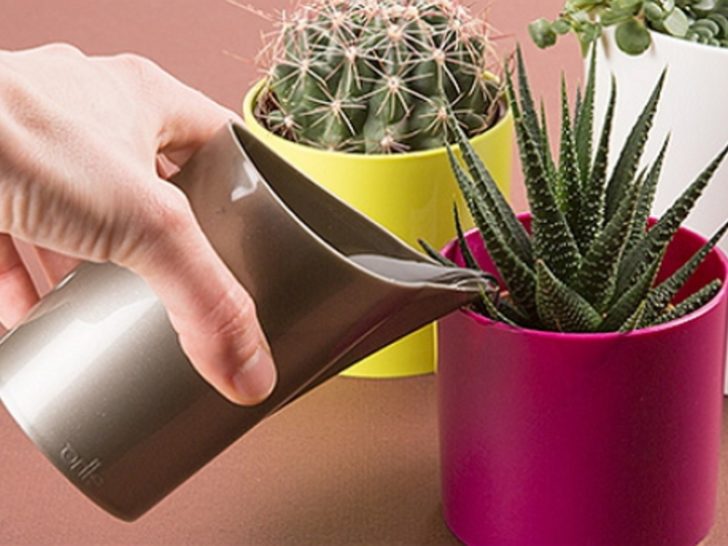
Watering cacti is rarely done
Where to put
Cacti in the interior of the room should be placed so that they have enough light and fresh air. They will thrive best in spacious, sun-drenched rooms.
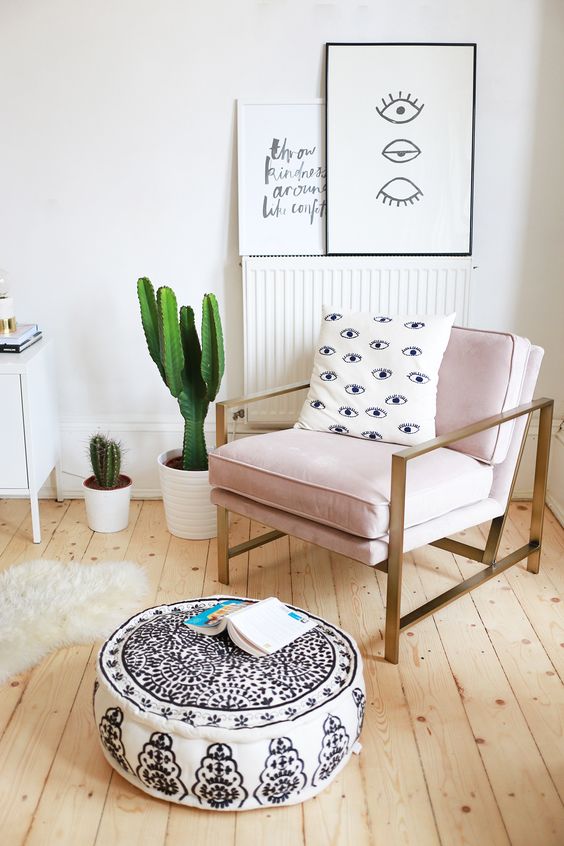
Cactus prefers sunny places
Temperature regime
Who said that cacti love the heat? Plants are just adherents of moderate temperatures, so do not worry about how "foreigners" will feel in our climate. The average temperature in the range of 18-20 degrees is quite suitable for them. In winter, they also calmly fall asleep in anticipation of spring, with average temperatures of 10-13 degrees. Even if there is a lower temperature in the room, this will not harm the plants. There are even frost-resistant cacti, but in the interior of the room where heating is provided, there is no point in breeding them.
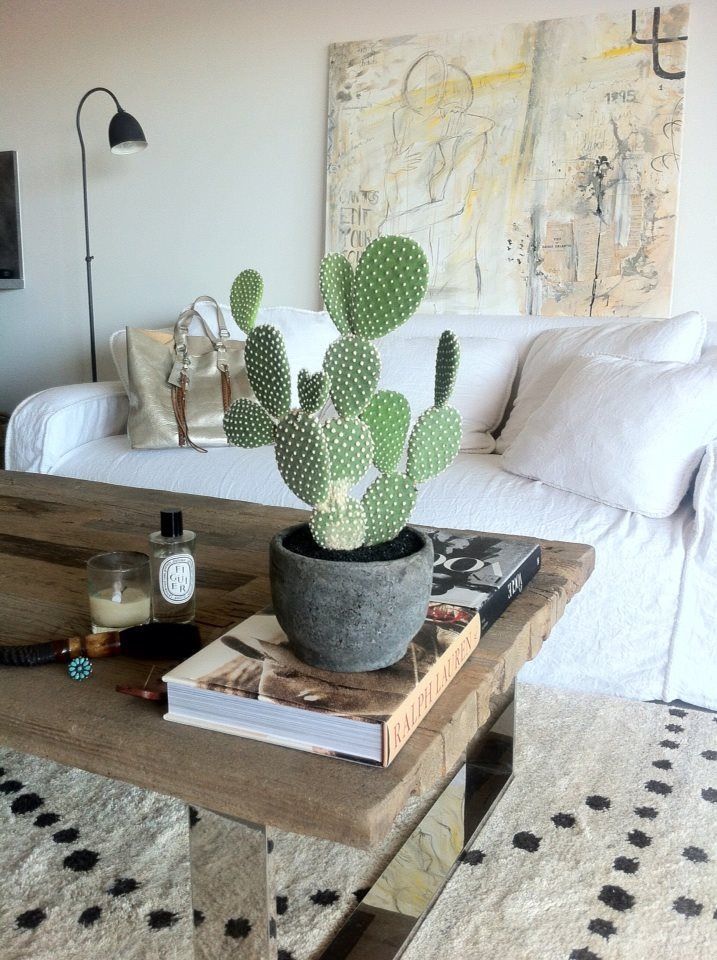
The average temperature for cacti is 18-20 degrees
Air humidity
Spraying is contraindicated for domestic cacti, except for Cleistocactus. In hot weather, it is better to arrange a draft than to pour water on them.
Transfer
At a young age, they need regular transplantation, then the process is carried out as needed.
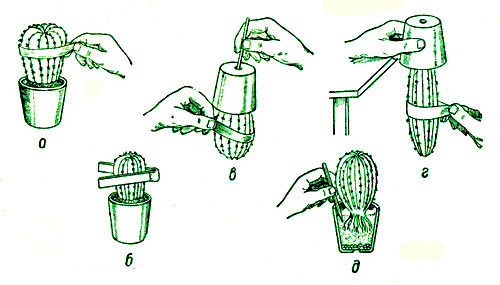
Young cacti are regularly transplanted
top dressing
A cactus, which is adequately cared for, is sure to receive top dressing. Make it monthly, excluding the winter period.You can use nutrient formulations of succulents or universal top dressing suitable for all types of indoor plants.
back to index ↑How to stimulate flowering
“Blossoming cacti become no earlier than three or even four years old”
Not all types of domestic cacti bloom voluntarily. If the cereos or prickly pear themselves throw out the buds at a fairly young age, then the bulk of the plants must be correctly brought to this process. In order for a cactus to bloom, it needs to get into its natural habitat, conditionally, of course. You can fool the plant in simple ways. Cacti bloom no earlier than three or even four years. Adult individuals will do this annually. Some types of domestic cacti will bloom in the spring, others in the summer. The flowering period falls on a new growth, and in order for it to take place, one must not forget to leave the pet alone for the winter and properly feed it.
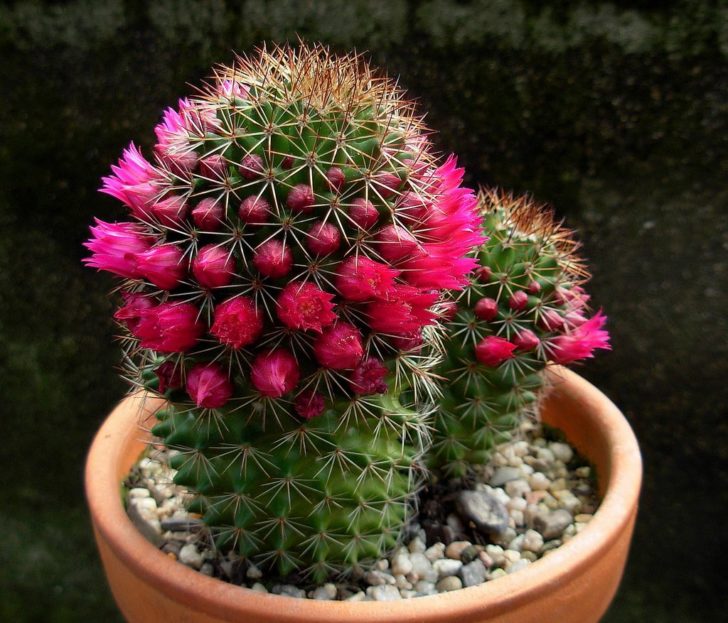
Adult cacti bloom annually
Another secret: flowering stimulates the maintenance of the plant in a slightly cramped pot.
back to index ↑Conclusion
Esotericists still argue about the mystical possibilities of the plant. Some consider the flowering of these succulents an exceptional miracle that brings good news to the house, while others insist that the appearance of flowers indicates a catastrophic accumulation of negativity in the room. Experts are unanimous only in the fact that flowering cacti are the result of creating excellent conditions for keeping plants, without violating the rules of watering, fertilizing schedules and sudden changes in temperature. Just enjoy the fruits of your labor - beauty cannot be negative!
back to index ↑Photo gallery - home cactus
Video
